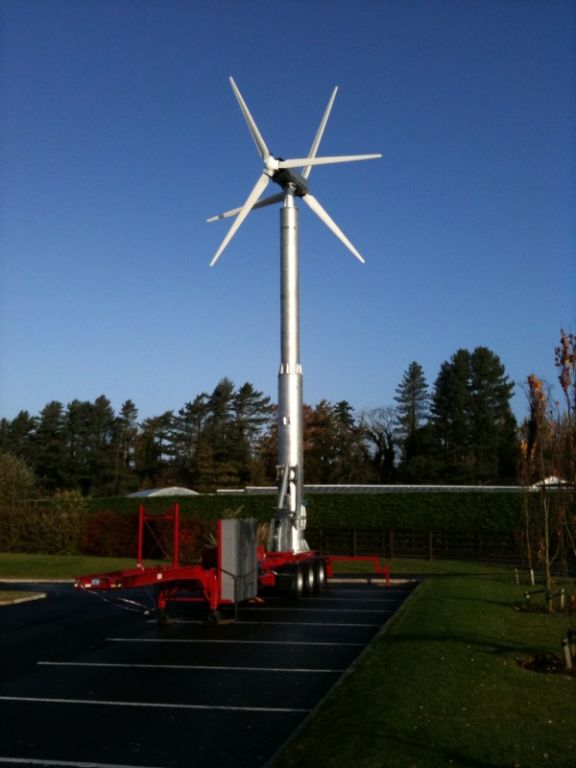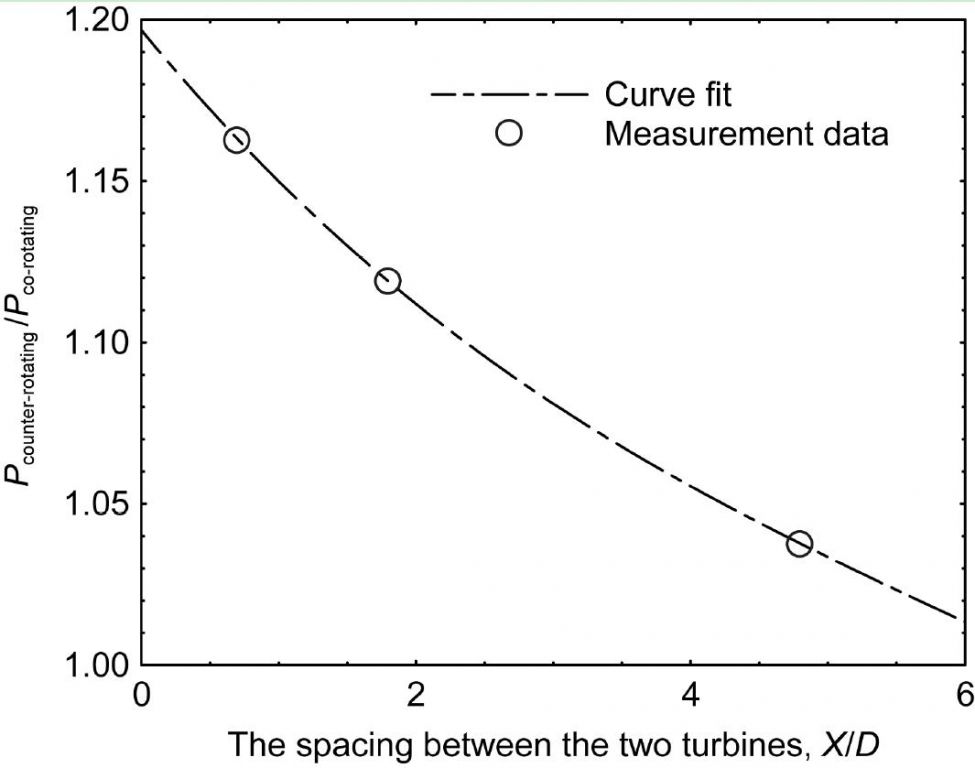博文
如何提高风力涡轮机的发电效能?
||
【按: 现代风力发电场通常由排列成阵列的多个风力涡轮机组成, 这其中产生的尾流干扰反过来会影响风力涡轮机的发电效率, 如何抑制尾流干扰, 是提高风电场发电效率的关键. 相比传统的单转子风力涡轮机, 本文介绍了一种串联式反向旋转风力涡轮机系统, 并在爱荷华州立大学一个大型的空气动力学/大气边界层(AABL)风洞进行了实验研究. 结果表明, 串联式反向旋转风力涡轮机系统可以有效的抑制尾流干扰, 并显著提高风力涡轮机的发电效率, 最高达到20%. 】

Wind energy is one of the most promising renewable energy resources in the world today. Dr. Hui Hu and his group at Iowa State University studied the effects of the relative rotation directions of two tandem wind turbines on the power production performance, the flow characteristics in the turbine wake flows, and the resultant wind loads acting on the turbines. The experimental study was performed in a large-scale Aerodynamics/Atmospheric Boundary Layer (AABL) Wind Tunnel available at Aerospace Engineering Department of Iowa State University. Their work, entitled “An experimental study on the effects of relative rotation direction on the wake interferences among tandem wind turbines”, was published recently in SCIENCE CHINA Physics, Mechanics & Astronomy, 2014, Vol 57(5).
In a typical wind farm, the wind turbine located in the wakes of upstream turbines would experience a significantly different surface wind compared to the ones located upwind due to the wake interferences of the upwind turbines. Depending on the wind turbine array spacing and layout, the power losses of downstream turbines due to the wake interferences were found to be up to 40%. Therefore, how to improve the power production of downstream wind turbines in a wind farm is one of the most significant research topics in recent years. Extensive experimental and numerical studies have been conducted recently to examine wind turbine aeromechanics and wake interferences among multiple wind turbines in order to gain insight into the underlying physics for higher total power yield and better durability of the wind turbines.
While most of the wind turbines in modern wind farms are Single Rotor Wind Turbine (SRWT) systems, the concept of Counter-Rotating Wind Turbine (CRWT) systems has been suggested in recent years. Since azimuthal velocity would be induced in the wake flow behind a wind turbine with its rotation direction in the opposite direction to the upstream rotor, the downstream rotor should rotate in the same direction as the swirling wake flow for a CRWT system in order to extract wind energy in the wake flow more efficiently. So far, since the distance between the two rotors in a CRWT system is always very small (i.e., less than 1D, and D is the rotor diameters), the attempts of CRWT to improve wind energy utilization are focused on near wake characteristics. On the other hand, most of the previous studies on the wake interferences among multiple turbines are limited to SRWT systems with all the turbines rotating in the same direction. The wake interferences among SRWT systems with different rotation directions in a wind farm have never been investigated before. With this in mind, Dr. Hu and his group conducted a comprehensive experimental study to quantify the effects of the relative rotation direction of two tandem wind turbines on the wake interferences among the turbines. While the oncoming flow was kept constant during the experiments, the model turbines were set to operate in either co-rotating (i.e., the downstream turbine has the same rotation direction as the upstream turbine) or counter-rotating (i.e., the downstream turbine has an opposite rotation direction in relation to the upstream turbine) configuration. The turbine power outputs, the static and dynamic wind loads (i.e., aerodynamic forces and bending moments) acting on the turbines, and the turbulence characteristics in the wake flows behind the turbines were measured and compared quantitatively.
It was found that the turbines in counter-rotating would harvest more wind energy from the same oncoming wind, compared with the co-rotating case. While the recovery of the streamwise velocity deficits in the wake flows was found to be almost identical with the turbines operated in either co-rotating or counter-rotating, the significant azimuthal velocity generated in the wake flow behind the upstream turbine is believed to be the reason why the counter-rotating turbines would have a better power production performance. Since the azimuthal velocity in the wake flow was found to decrease monotonically with the increasing downstream distance, the benefit of the counter-rotating configuration was found to decrease gradually as the spacing between the turbines increases. While the counter-rotating downstream turbine was found to be able to produce up to 20% more power compared with the co-rotating downstream turbine when the spacing between the turbines was 0.7 rotor diameters (i.e., 0.7D), the advantage of the counter-rotating configuration was found to be reduced to only about 4.0% when the spacing between the turbines was increased to about 5.0D. Since the azimuthal flow velocity in the wake flow was found to become almost negligible in the further downstream region, the benefits of the counter-rotating configuration were found to die away (i.e., <1.0%) when the spacing between the turbines becomes greater than 6.5D. It suggests that, on the practical relevance of wind farm design, counter-rotating configuration would be more beneficial to onshore wind farms, compared with offshore wind farms, due to the much smaller spacing between the turbines (i.e., ~3 rotor diameters for onshore wind farms vs. 6~10 rotor diameters for offshore wind farms), especially for those turbines sited over the mountains/hills with the spacing between the turbines only about 1~2 rotor diameters.

Figure 1 The ratios of the power outputs for the downstream turbine in counter-rotating to those in co-rotating as a function of the spacing between the turbines

https://blog.sciencenet.cn/blog-306503-787502.html
上一篇:一种新的可压缩混合层厚度及增长率量化研究方法
下一篇:《中国科学: 物理学 力学 天文学》英文版第6期在线发布